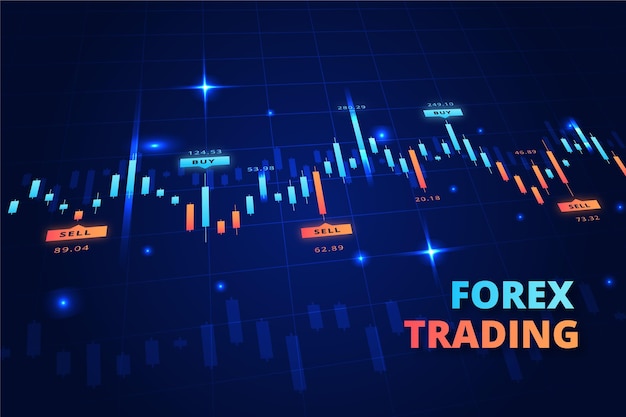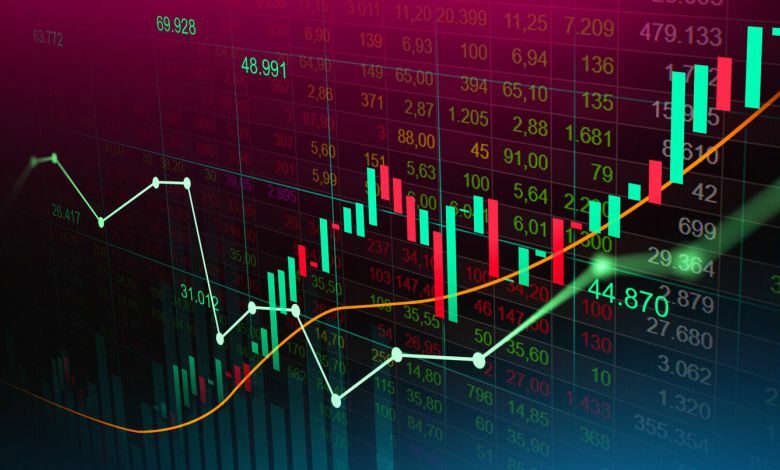
FOREIGN EXCHANGE MARKET [FOREX]
What is Forex?
Forex is short for foreign exchange, and it refers to the process of buying and selling currencies in the global market. Currencies are traded in pairs, with one currency being bought and the other being sold. For example, the EUR/USD pair is the euro and the U.S. dollar.
How does Forex trading work?
When trading forex, you’re essentially speculating on whether the value of one currency will increase or decrease relative to another.
I’ll start by explaining how currency pairs are quoted in the forex market. The first currency in a currency pair is called the “base” currency, and the second currency is called the “quote” currency. The base currency is always equal to one, and the quote currency is variable. The exchange rate shows how much of the quote currency you can buy with one unit of the base currency. This rate is constantly changing, and that’s what makes the forex market so dynamic.

Now that we’ve covered the basics of currency pairs, let’s talk about how to place a trade in the forex market. To place a trade, you’ll need to decide whether you think the base currency will increase or decrease in value relative to the quote currency. If you think the base currency will increase in value, you’ll “buy” the currency pair. If you think it will decrease in value, you’ll “sell” the currency pair.
N/B: I used the word “Decide” and not “Predict” because being profitable in Forex trading is not achieved by gambling (prediction trading) rather being profitable is achieved by making rational trading decisions which are determined by some key factors which I will talk about at the end of this article.
Let’s use a real-world example to illustrate this concept. Let’s say you think the euro is going to increase in value relative to the U.S. dollar. In this case, you would buy the EUR/USD currency pair. If your prediction is correct and the euro does increase in value, you would make a profit on your trade. But if the euro decreases in value, you would lose money.
The next concept to understand is “pips.” A “pip” is the smallest amount that a currency can change in value. In the EUR/USD currency pair, a pip is equal to 0.0001, or one hundredth of a cent. Most forex brokers will quote currency pairs with four or five decimal places, so you’ll see prices like 1.11250. This means that each change in the fourth decimal place represents a pip (this may take a while for you to process, but hang on till the end of this article).
Now that we’ve covered pips, let’s talk about “leverage.” Leverage is a way to trade with more money than you actually have in your account. In forex trading, you can typically use leverage of up to 50:1 or even 100:1. This means that for every dollar you have in your account, you can control up to 50 or 100 dollars worth of currency. For example, if you have $1,000 in your account, you could control up to $50,000 worth of currency. This can be a powerful tool because this is what enables a trader trade with more capital he has at his disposal which can fetch much profit that would not have been possible to make with the capital he had, basically, LEVERAGE GRANTS MORE TRADING POWER but it also comes with increased risk if a trader has a poor risk management system.
for instance, you decide to place a trade with a 50:1 leverage ratio. In order to protect your account from excessive risk, you’ll need to set a “stop loss” order. A stop loss is an order that automatically closes your position if the price moves against you by a certain amount. This protects you from losing more money than you can afford. It’s important to remember that stop loss orders aren’t foolproof, and there is still a risk that you could lose more money than you have in your account.
Now that we’ve covered the basics of placing a trade, let’s talk about “margin” and “margin calls.” Margin is the amount of money you need to have in your account in order to open a trade. This is usually a percentage of the total value of the trade. A margin call is when your account equity falls below the required margin for your open positions. This can happen if the price moves against you and your stop loss order doesn’t trigger in time. If you get a margin call, you’ll need to add more money to your account or close your positions.
Now that we’ve covered some of the basics of forex trading, let’s talk about some of the benefits and risks. One of the benefits of forex trading is that the market is open 24 hours a day, 5 days a week. This gives you more flexibility to trade when it’s convenient for you. Another benefit is that the forex market is very liquid, which means it’s easy to get in and out of trades quickly. But there are also some risks associated with forex trading. One risk is that the market is highly volatile, which means prices can change quickly and unpredictably.
A trading plan is essential for success in forex trading. Your plan should include your goals, your risk tolerance, and your strategy for managing risk. Your risk management strategy should include setting stop loss orders and taking profits when appropriate. You should also have a plan for how you’ll deal with a losing streak. It’s important to remember that even the best traders experience losses from time to time. The key is to manage your risk so that one bad trade doesn’t wipe out your entire account. Do you have any specific questions about risk management?
TOOLS NEEDED TO GET STARTED
You will need just two apps to begin this new trading journey, these apps are;
a) A BROKER: A forex broker is a financial services company that provides traders access to a platform for buying and selling foreign currencies. A broker I will recommend is EXNESS, SIGN UP HERE.
b) META TRADER APP (popularly referred to as MT4 or MT5)
REMEMBER THE TRADING DECISION I MADE MENTION OF AT THE BEGINNING OF THIS ARTICLE?
Making a buy or sell trade decision hinges on some very key factors which if ignored leads to prediction trading and ultimately, a series of losses as no one can always predict right.
The factors that basically makes up this trading decisions are;
Good understanding of chart patterns
Proper risk management system
Discipline to always only trade when an opportunity surfaces
THESE ARE JUST THE KEY AND BASIC FACTORS.
IF YOU WANT TO GET STARTED IN LEARNING AND TRADING THE FOREX MARKET, THIS COURSE IS FOR YOU.

